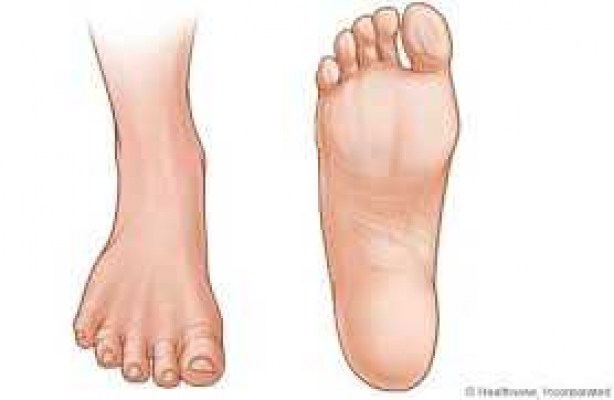Articles
Plantar Fasciits - Article by Margarita Gurevich, published in the Great Health Guide

Plantar Fascia
by Margarita Gurevich
Senior Physiotherapist
Plantar fasciitis – the term might be a mouthful but the meaning is quite simple - inflammation of the fascia (connective tissue) on the underside of the foot, which connects the heel to the toes and acts as a shock absorber. When the tension on this band becomes too strong small tears can form; repetitive tears and stretching can lead to irritation and inflammation of the plantar fascia, causing pain in the foot and heel.
In this article we will review how plantar fasciitis is generally diagnosed as well as what you can do to prevent and treat it. Bear in mind that each case is different and that the information provided in this article is not a substitute for seeing a qualified health professional.
Diagnosis
Unlike many other conditions that can be tricky to diagnose, the diagnosis of plantar fasciitis is usually quite straightforward. Several factors in the history and examination are so characteristic that in most cases the diagnosis is not difficult. Pain that is worse on first arising in the morning or after a period of rest is highly suggestive of plantar fasciitis. The pain often improves when we start to walk but may recur after prolonged, continued, or more stressful activity. When severe, the pain may have a throbbing, searing quality. The second highly characteristic feature is the location of the pain, which is usually along the arch of the foot, anywhere between the heel and toes.
Your physiotherapist can perform a few simple tests that are very specific to plantar fasciitis. These include palpation (feeling) of the arch of the foot, movements of the foot and toes as well as testing the strength of the muscles of the foot. Imaging tests, such as ultrasound, X-Ray etc are generally not required. However, if the symptoms don’t improve with treatment it is important to undergo these tests in order to make sure that the diagnosis is correct and that there is nothing else causing the clinical signs.
Your physiotherapist can perform simple tests specific to plantar fasciitis.
Risk factors
There are a number of risk factors that have been shown to be associated with plantar fasciitis. These include the following:
· Exercise which places repetitive stress on the plantar fascia, such as dancing (particularly ballet), long distance running and others
· Age (40-60 is the most common age for presentation)
· Abnormal foot biomechanics (e.g. having a high arch, incorrect pattern of walking and others)
· Obesity
· Certain occupations which requires the person to spend a lot of time on the feet
Relationships have also been proposed, but not established, for other factors, such as acute injury, the presence of a heel spur, the shoe type, the walking surface and others.
A number of these risk factors are under our control.
From this list it is evident that the risk of developing plantar fasciitis can be significantly reduced if we do the following:
· Maintaining a healthy weight
· Making sure that if we are involved in sports which stress the plantar fascia, we have the correct technique
· Trying to limit the time on our feet. Even if our occupation forces us to be on our feet a lot it is usually still possible to take breaks and do certain stretches which take the pressure off the plantar fascia, allowing it to recover.
Treatment
There are a number of treatment options available for plantar fasciitis and there is a consensus that nonsurgical treatment is effective approximately 90% of the time, which is very reassuring. The most treatment approaches are physiotherapy, night splints and orthotics. Physiotherapy treatment includes ultrasound treatment and drug phoresis, soft tissue massage and stretching of the plantar fascia as well as strengthening exercises for the small and large muscles of the foot and the lower leg in general.
Ultrasound helps to settle the inflammation, which in tern turn reduces the pain associated with plantar fasciitis. Drug phoresis is when ultrasound is coupled with medications such as Voltaren Voltaren Emulgel, instead of ultrasound gel. The sound waves drive the medication into the foot tissues, which results in a double effect – that of the ultrasound and the medication. From our experience this is usually superior to the use of ultrasound alone.
When it comes to strengthening exercises it is important that these include not only the muscles of the foot but of the whole lower leg. To understand why we will look at an example. Let’s say that you have weak muscles of the hips. As a result of this more load will be going through your knees and consequently through the ankle and foot, placing even more strain on the plantar fascia. Consequently, even if you treat the plantar fasciitis the risk of having a flare up in the future will be much greater than if the muscles of the whole lower leg are working well.
